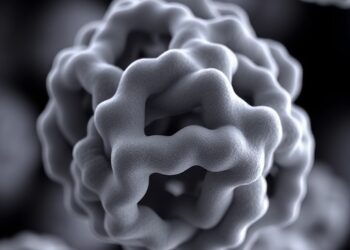A team of scientists from A*STAR’s Genome Institute of Singapore (GIS) and Bioinformatics Institute (BII) has developed a new AI software tool called “BANKSY” that automatically recognises the cell types present in a tissue, such as muscle cells, nerve cells and fat cells. Going a step beyond conventional AI tools which can group cells together into clusters if they contain similar molecules, BANKSY also considers how similar the cells’ surroundings in the tissue are. With BANKSY, researchers would be able to improve their understanding of tissue processes in diverse diseases quicker and more accurately, which can support the development of more effective diagnostics and treatments for cancer, neurological disorders and other diseases. This breakthrough research was published in the article “BANKSY unifies cell typing and tissue domain segmentation for scalable spatial omics data analysis” in Nature Genetics on 27 February 2024.
A team of scientists from A*STAR’s Genome Institute of Singapore (GIS) and Bioinformatics Institute (BII) has developed a new AI software tool called “BANKSY” that automatically recognises the cell types present in a tissue, such as muscle cells, nerve cells and fat cells. Going a step beyond conventional AI tools which can group cells together into clusters if they contain similar molecules, BANKSY also considers how similar the cells’ surroundings in the tissue are. With BANKSY, researchers would be able to improve their understanding of tissue processes in diverse diseases quicker and more accurately, which can support the development of more effective diagnostics and treatments for cancer, neurological disorders and other diseases. This breakthrough research was published in the article “BANKSY unifies cell typing and tissue domain segmentation for scalable spatial omics data analysis” in Nature Genetics on 27 February 2024.
BANKSY is adept at identifying subtly distinct cell groups in spatial molecular profiles generated from tissue samples. Moreover, BANKSY addresses the distinct but related problem of demarcating functionally distinct anatomical regions in tissue sections. For instance, it can distinguish layered structures in the human forebrain.
Spatial molecular profiling (Spatial Omics) technologies are powerful microscopes that allow scientists to study tissues in great detail, by revealing the exact locations of individual biological molecules in cells, as well as the arrangement of cells in tissues. This helps them understand how cells come together in tissues to perform their normal physiological functions, and also how they behave (or misbehave) in diseases such as cancer, autism or infectious diseases such as COVID-19. This understanding is essential for more accurate diagnosis and tailored treatment of patients, as well as the discovery of new drugs.
BANKSY can help biologists interpret and extract insights from the latest Spatial Omics technologies that have emerged over the past few years. Versatile, accurate, fast and scalable, BANKSY stands out from existing methods at analysing both RNA and protein-based Spatial Omics data. Capable of handling large datasets of over two million cells, BANKSY is 10 to 1,000 times faster than competing methods that were tested, and two to 60 times more scalable. This means that the method can also be applied to other key data-processing steps, such as detecting and removing poor quality areas of the sample, and for merging samples taken from different patients for combined analysis.
BANKSY has been independently benchmarked and found to be the best-performing algorithm for spatial omics data by two independent studies, one of which concluded that BANKSY can be a powerful solution for the identification of domains. The other study tested six algorithms and selected BANKSY as the most accurate for their data analysis.
Dr Shyam Prabhakar, Senior Group Leader, Laboratory of Systems Biology and Data Analytics and Associate Director, Spatial and Single Cell Systems at A*STAR’s GIS, said, “We anticipate that BANKSY will be a game-changing tool that helps to unlock the potential of emerging Spatial Omics technologies. This will hopefully improve our understanding of tissue processes in diverse diseases, allowing us to develop more effective treatments for cancers, neurological disorders and many other pathologies.”
Professor Liu Jian Jun, Acting Executive Director at A*STAR’s GIS, said, “The work on BANKSY advances our strategy of combining high-throughput technologies with scalable, robust AI software for problem-solving and identifying the clues to what can make a difference in the lives of patients.”
Dr Iain Tan, Senior Consultant, Division of Medical Oncology at National Cancer Centre Singapore and Senior Clinician Scientist at A*STAR’s GIS Laboratory of Applied Cancer Genomics, said, “We are using BANKSY to identify the cells that help tumours grow and spread to other parts of the body – drugs targeting such cells could be a promising direction for cancer treatment.”
Journal
Nature Genetics




